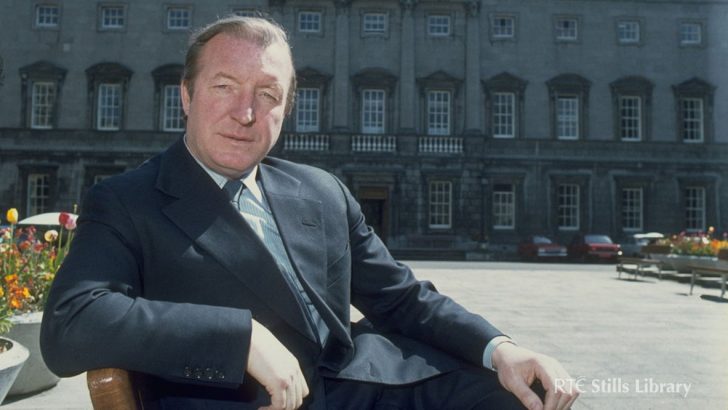Felix M. Larkin
The Fourth Estate: Journalism in Twentieth-Century Ireland
By Mark O’Brien (Manchester University , £80)
This book is about “the conditions under which journalism was practised” in Ireland in the 20th Century, with a focus on “how centres of power related to journalists” – to quote the author, Mark O’Brien, lecturer in journalism history at Dublin City University.
The centres of power in question are, unsurprisingly, political, ecclesiastical and business – and O’Brien endorses the wholly dismissive assessment of Irish journalists by Michael O’Toole, himself a journalist, in 1988 as “a docile lot, anxious to please the proprietor, the advertiser, the prelate, the statesman”.
The distinguished American journalist, Walter Lippmann, once wrote that “the function of news is to signalize an event”.
News
The media, however, have enormous discretion in deciding which events to note and which to ignore. In short, they decide what is the news. News, therefore, should not be regarded as an objective concept; it is not the same as truth.
Truth is what actually happens, whereas news is what is reported. O’Brien’s argument in this book is that the media in Ireland have all too often failed to report the truth – the full truth – about what was going on in the country, either because they were too deferential or timid and self-censored the news or because the centres of power were simply too strong and could block critical reportage.
In other words, Irish journalism – with few exceptions – has not lived up to the ideals of “speaking truth to power” and “holding power to account”, two of the most common definitions of the responsibility of the Fourth Estate. We have been short-changed by the domestic providers of news. By contrast, British tabloids sold in Ireland were much less restrained – but they were condemned for it, and O’Brien gives several examples.
In fairness, this is not just an Irish problem – and O’Brien might have acknowledged that in his text. As the recent Oscar-winning film Spotlight showed, the press in Boston was every bit as slow to expose the child abuse problem among Catholic clergy and the institutional cover-up of it as were the media in Ireland. It was only after the Boston Globe newspaper hired a new editor from outside the Boston area that the investigative team at the Globe was given free rein to research and publish the story.
Even the best and brightest among Irish journalists were not immune to the culture of suppression. O’Brien highlights, for instance, that Douglas Gageby – the revered editor of The Irish Times – frustrated various attempts by his journalists to uncover the sources of Charles Haughey’s wealth. According to one such journalist, Frank McDonald, Gageby “basically didn’t want stuff that was ‘damaging’ to Haughey to appear in the paper”.
As O’Brien records, it was a “freak incident” in Orlando, Florida, involving Ben Dunne – and not Irish journalism – that “eventually exposed all”. Legal documentation arising in the subsequent struggle for control of the Dunnes Stores business revealed that Dunne had given money to Haughey – and from that the whole cat’s cradle began to unravel at last.
Irish television
O’Brien argues that the advent of Irish television in the 1960s initiated a transformation in Irish journalism. Its more aggressive and critical journalism was, in O’Brien’s words, “a strong counterblast to the existing media and the constrained journalism that then existed”. The process of transformation was, however, fitful – and it remains incomplete in the face of continued resistance from the centres of power.
O’Brien is right to conclude that recent Irish journalism is “not altogether free from the constraints of church and state, but [is] establishing ever greater distance…thus upping the ante in terms of challenging institutions to be accountable and transparent”.
The most ludicrous manifestation of these constraints was the establishment by the government of a three-judge tribunal of enquiry into a 1969 television programme on illegal money-lending in Dublin – the tribunal’s role being to examine the journalistic practices followed in making the programme, rather than the real scandal of money-lending.
The tribunal’s report was predictably critical of the programme, with the result that – as later recalled by the programme’s editor, Muiris Mac Conghail – “an edge had been dulled in the area of investigative reporting”.
More controversial – and heavy-handed – was the action of the government in 1971 in invoking Section 31 of the Broadcasting Act in order to ban RTÉ from reporting “any material that could be calculated to promote” paramilitary political activity. That ban was part of what O’Brien has elsewhere termed “the silencing project in the South”, a range of legislative measures responding to the Troubles in Northern Ireland.
While no sane person likes censorship, it must be said that these measures reflected a fear in official circles in Dublin that Irish journalism would too easily be intimidated out of challenging militant republican propaganda. As this book demonstrates, it had failed to confront other powerful interests in the preceding years – so perhaps that fear was justified.
One must, in conclusion, regret that the exorbitant price of this book will deprive it of the wide readership that it richly deserves.


 Former Taoiseach and Fianna Fáil leader, Charles J. Haughey.
Photo: RTÉ
Former Taoiseach and Fianna Fáil leader, Charles J. Haughey.
Photo: RTÉ 